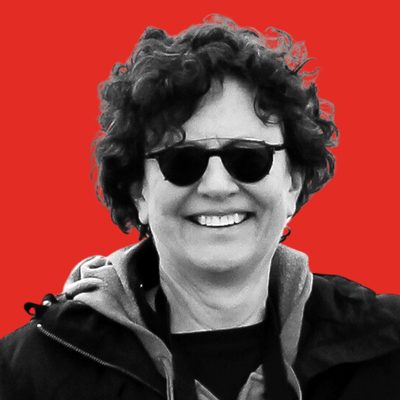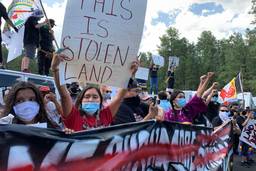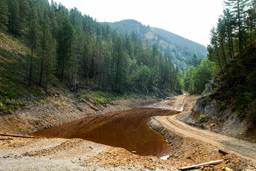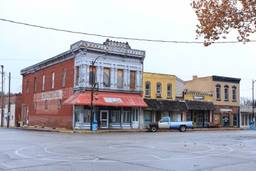Bringing Back the Buffalo Was Always Important to the Rosebud Sioux. The Pandemic Made It Urgent
Stephanie Woodard
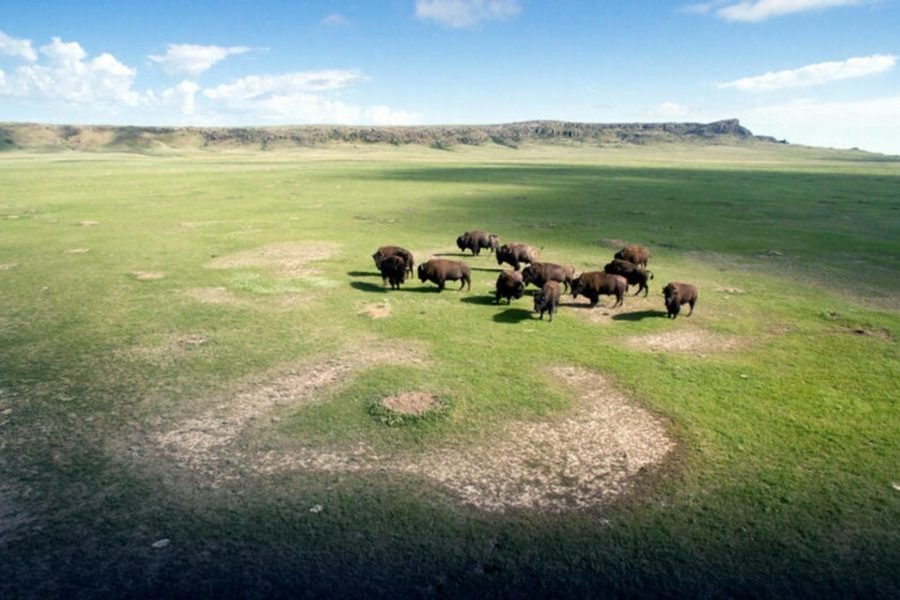
“We have always believed that bringing back the buffalo is important, but the pandemic shows that it is urgent,” said Wizipan Little Elk. “We are all talking about food security and what the new normal is going to be…We [at Rosebud] have to get back to our roots and provide an example for the rest of the world.”
Little Elk, CEO of the Rosebud Economic Development Corporation (REDCO), is referring to the alarming problems the pandemic has exposed in the huge, centralized system that provides most Americans with their food. Over the last several months, numerous large meat packers closed down after workers were found to be infected with coronavirus. Supply chain problems have caused many farmers to have to kill and dispose of millions of pigs and chickens, dump milk and plow under vegetable crops. Meanwhile, sporadic food shortages have been reported around the country, adding to the fear and insecurity created by the pandemic.
With 1,500 buffalo given by the Department of the Interior over five years, the Rosebud Sioux Tribe will establish the Wolakota Buffalo Range and take a step toward economic sustainability and their own food sovereignty — independent of the nation’s ailing food system. The tribe also hopes the herd can help reestablish its historical relationship to the buffalo. As the largest Native-American-owned herd, it will revitalize the tribe by supplying school meals on the reservation, welcoming visits from Lakota-language immersion classes and making spiritually important items such as hides and skulls available to community members. The tribe also plans to build a small-scale meat-processing operation to make the grass-fed, humanely raised meat available locally and, to generate revenue, to the public as well, said Little Elk. By improving the health of the prairie ecosystem and its ability to sequester carbon and remove greenhouse gases from the atmosphere, he said, the herd will also help fight climate change.
Aspects of the project are still in the planning stage. Eco-tourism programs and a museum are under consideration, as are herd-sharing arrangements that would allow community members and organizations to purchase rights to animals and their offspring, perhaps eventually starting their own herds. Any of these activities, to be realized, must both stand on its own fiscally and contribute to the whole, said Project Manager Aaron Epps. At this point, Wolakota can’t calculate the exact cost, if any, of the various benefits, he said.
“We can say that this project is meant to be for the good of Sicangu [Rosebud] people and land,” he added. “We are a community-focused organization, so we are making every effort to ensure that tribal citizens have easy access to opportunities the herd will provide.”
Little Elk, who was an Interior Department official during the Obama administration, saw the Wolakota project as a model for other communities that wish to establish their own local, varied and healthy sources of food. “We will lean into the pandemic,” he said. “We will not be intimidated by it. We at Rosebud, as one small community, will do our part to rebuild the American nation.”
Those principles of caring and responsibility are apparent in the very word wolakota. “A literal translation is ‘living the Lakota way of life,’” Little Elk said. “In the buffalo project, we are actively taking steps to embody the values and principles and the very best of what it means to be Lakota: self-reliance, self-sufficiency, being a good relative and taking care of others — not just humans, but other animals, plants and the environment.”
The Interior Department views participating in the Wolakota project as an exceptional opportunity, said Dr. Brendan J. Moynahan, National Park Service science advisor and chair of DOI’s Bison Working Group. It is a way for the department to support the rugged, shared American values Little Elk describes, and it lets DOI reaffirm its longtime interest in the animal. An image of a bison appears in the department’s logo. “All Americans, all people, are captivated by the strength of bison,” Moynahan said.
For DOI, a compelling aspect of the Wolakota story was the variety of ways one herd will serve the Rosebud community. Until now, American bison herds have generally been managed for one of three primary goals, said Little Elk: They have been commercial, for-profit herds, mainly intended to produce meat for sale. Or they have been tribes’ small culturally oriented herds of about 50 to 500 animals that provide occasional meat sales. Or bison have been managed from a park perspective, largely for public enjoyment and education, such as the animals at Yellowstone National Park.
The Wolakota Buffalo Range does not just synthesize a range of Rosebud ideas and aspirations. Decades of work at DOI also come together in the project, according to Moynahan. These include years of discussions about bison management with park employees and painstaking scientific work to understand and preserve buffalo genetic diversity.
To provide ongoing support for these efforts, DOI has just announced a 10-year department-wide Buffalo Conservation Initiative. At the same time, according to Moynahan, there’s newly invigorated interest in bison among tribes and other organizations. “Wolakota is emblematic of this moment,” he said.
Wolakota is both a homecoming and a reunion, according to Carter Roberts, president and CEO of World Wildlife Fund (WWF), which is working with REDCO and the Department of the Interior to develop the herd. The buffalo are returning to a landscape and a people with which they long shared a symbiotic relationship, Roberts said.
WWF involvement in the project includes finding financial backing for land leasing, transportation of the buffalo to their new home, and other practical matters, said Bison Team Lead Dennis Jorgensen, who works with the organization’s Northern Great Plains Program. At Rosebud, WWF will engage in ongoing environmental monitoring to ensure that Wolakota’s tract continues to support the number of buffalo placed on it. In addition to the Wolakota Buffalo Project, WWF works with other bison-restoration projects, including one at the reservation of the Fort Peck Assiniboine & Sioux Tribes, headquartered in Poplar, Mont.
WWF learned a great deal from the Fort Peck project about working with tribal communities, said Jorgensen. Buffalo are essential to culture, spirituality and history, he noted, but they must also be a functioning part of contemporary life — feeding elders and schoolchildren, for example. Sometimes, WWF found, solving a need was as simple as providing transportation to the remote area where the herd is pastured so tribal members can enjoy viewing it.
Nowadays, according to Jorgensen, a herd may be a lifesaver in a very immediate way. “It may help a tribe feed people who must shelter in place to minimize Covid-19 exposure.” If establishing a tribal herd is about conservation only, it can end up being an economic burden, he added. “It has to be sustainable in a meaningful way.”
A Brutal Past
Once numbering in the tens of millions, buffalo carved ecological niches continent-wide for innumerable other plants and animals. For many indigenous people, bison were a primary source of food, clothing and housing materials, hunting and cooking implements, and more. During the 19th century, however, the U.S. government encouraged the extermination of the bison as a means to subdue the tribes and facilitate the country’s western expansion.
Starting in the 1850s, the federal government cheered on military men, settlers, hunters, and other newcomers to the American West as they killed bison at a rate of hundreds of thousands per year. They even shot them from train windows, writes Carolyn Merchant in American Ecological History: An Introduction. An average hunter took down 100 a day, she reports. After barely 20 years of this killing spree, just several hundred bison remained.
Starved of a critical resource, tribes were forced onto reservations. Native people understood well that the shameful process was intentional, the late Sioux elder Philip Lane told me in 2000, when he was 85. “[In] order to get rid of the ‘Indian problem,’ you had to get rid of the Indians,” Lane said. “The government wanted settlers to come in and break up that prairie ground. It was never meant to be broken up. It was all buffalo pasture.”
The subsequent widespread plowing and agricultural development of the Plains, following on the heels of the sudden extermination of the great buffalo herds, was a heavy hit for the continent’s ecological balance. Among other outcomes, the Dust Bowl resulted from trying to make the Plains into farmland.
Return of the Buffalo
Named the National Mammal of the United States by Congress in 2016, today wild bison thrive by the tens of thousands in tribal, federal and other public herds. That is thanks to conservation efforts by tribes, states, the Department of the Interior, the World Wildlife Fund, the InterTribal Buffalo Council and other individuals and groups.
To make up Rosebud’s herd, animals will be chosen each year from among surplus federally-owned bison — those beyond the comfortable carrying capacity of the grasslands of various federal parks, according to Moynahan. He saw Wind Cave National Park as one probable source for animals, a resonant choice given the Lakota legend recounting the mutual emergence of buffalo and their human kin from Wind Cave in primordial time.
The federal government’s genetic testing criteria assures the tribe that it will receive animals that are as much as possible like historic buffalo, said Project Manager Epps. The care the government takes is a necessity, given what Moynahan calls the genetic “bottleneck” that bison went through at the turn of the 20th century, when so few remained. Another pressure has come from the meat industry’s continual efforts to cross bison with cattle and produce another type of saleable meat.
Despite all these hurdles, according to Moynahan, the federal government has done excellent work in conserving bison as a species and preserving their original genetic makeup. DOI’s new Buffalo Conservation Initiative will not only carefully select animals for Rosebud, it will also swap individual buffalo among federal herds to support their genetic diversity overall.
The Interior Department calls bison the nation’s “ecological engineers.” When the first group of approximately 200 arrives at Rosebud this fall, they’re expected to get right to work, renovating a chunk of North America — 28,000 acres of abandoned cow pasture.
Yucca have invaded particularly over-grazed portions of the tract. No problem! said Jorgensen. Bison are known to shove their heads into the tough, spiny plants, tear them up and devour their juicy roots, he explained. Meanwhile, as they accomplish that job, their cloven hooves continually press the seeds of prairie grasses and herbs into the range’s soil, an essential process for helping these kinds of seeds sprout. (If you look into the small depression of a buffalo’s hoofprint, you can identify little seeds ranged on its sides and see how this process gets underway.) The end result is that native plants will revegetate the areas the buffalo have so helpfully cleared.
These and other bison activities will transform the area. They are especially fond of wallowing — throwing themselves on their backs and wriggling vigorously. In doing so, they press even more native seeds into the ground and create shallow pools that catch rainwater essential to the plants and animals of this arid land. They’ve been shown to support the revival of a rare, ecologically influential blue butterfly. Native birds use their fur to line their nests.
Scientists continue to discover the subtle ways in which bison and our landscape have co-evolved, according to Moynahan. “[Their] intense grazing caused grasslands to green up faster, more intensely, and for a longer duration,” wrote Dr. Chris Geremia and colleagues in a November 2019 paper in the Proceedings of the National Academy of Sciences. By stimulating springtime plant growth, bison provide themselves and other animals with a continual supply of high-quality forage, the scientists found. “It’s an example of what we’re still learning about this incredible animal,” said Moynahan.

The fence must also be able to contain the massive buffalo. Weighing in at up to 2,000 pounds and able to reach speeds of 40 miles per hour, they can challenge ordinary barriers, Epps said. And they are determined to roam. Fortunately, they’re also prudent. Before they jump a fence, they measure it. Epps said he has been told by experienced buffalo handlers that bison come up to a fence and check whether they can put their chin on top of it. “If they can,” Epps said, “over they go.” At five and one-half feet, Wolakota Buffalo Range’s fence should deter even the herd’s top athletes.
Beginning of a Long Recovery
The coronavirus pandemic is presenting the United States with devastating challenges to health and to its ability to make food consistently available around the country. It is also shining a harsh light on the nation’s inequities, as both death rates and economic pain fall most heavily on poor communities and on people of color.
Covid-19 has widened already-existing gaps in income, health care, education, child poverty and hunger, employment and housing. Established by what Martin Luther King called “battles for racial supremacy” that began in the 1500s, our nation still leans heavily on structures of inequality and alienation today.
In Little Elk’s view, the United States is at the beginning of a long recovery. Wolakota Buffalo Range can show us how to make a start, each group in its own way and in its own place. “We all need hope and real models for action,” he said.
Stephanie Woodard is an award-winning human-rights reporter and author of American Apartheid: The Native American Struggle for Self-Determination and Inclusion.
